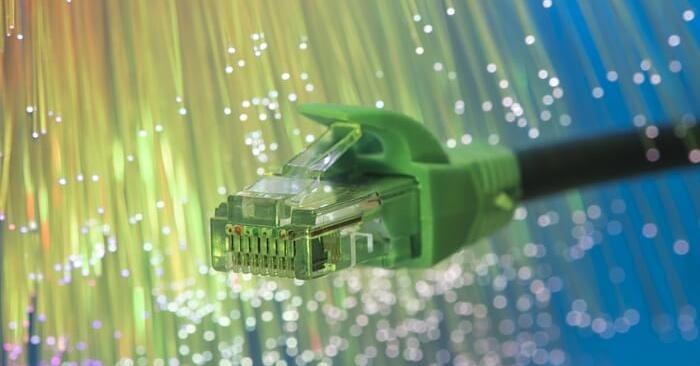Fiber-optic internet employs the use of fiber-optic cables to transmit data through light signals: this technology provides phenomenally fast and dependable internet speeds. Unlike their traditional copper-based counterparts–which rely on electrical signals for data transmission–fiber optics offer a significantly higher bandwidth; consequently, download and upload speeds operate at accelerated rates.
Speed
Fiber optic internet boasts a primary advantage: its exceptional speed capabilities. It caters ideally to households with high-bandwidth demands–such as streaming 4K video, engaging in online gaming, and concurrent device usage; this is due to download speeds that can scale up dramatically: reaching beyond 1 gigabit per second (Gbps).
Low Latency and Consistency
Low latency, a crucial feature for real-time applications such as online gaming and video conferencing, is also boasted by fiber optic internet; typically—compared to other connection types—it offers more consistent speeds: this remains true even during peak usage times.
Future-Proofing Your Connection
Secure the future of your home’s network infrastructure by opting for a fiber optic internet connection. As technology inexorably progresses and our patterns of internet consumption evolve, fiber optic networks are uniquely poised to accommodate the increasing needs for bandwidth and to support forthcoming technological innovations.
Availability and Coverage
Famed for its rapid transmission speeds and robust reliability, the availability of fiber optic internet is not uniform across regions: densely populated cities and major urban environments enjoy wide-ranging coverage; conversely, remote rural areas often encounter only sparse access. Despite this, an encouraging trend is seen as numerous Internet Service Providers (ISPs) are diligently working to extend their fiber optic networks, thereby increasing the number of communities benefiting from this advanced technology.
Installation Considerations
Typically, professional installation is necessary to run fiber-optic cables directly to your home for installing fiber optic internet. Although this process may be more involved than setting up a traditional internet connection, the initial setup complexities often pale in comparison to the benefits of using fiber-optic technology.
Comparing Costs
Fiber optic internet, despite offering manifold advantages, may indeed carry a hefty price tag compared to alternative connection types; yet–one must carefully balance this cost with the unrivaled value it delivers in terms of speed, reliability and future-proofing potential. Some ISPs offer competitive pricing and packages, including a cheap internet deal for fiber optic services, making it more accessible to budget-conscious consumers.
Potential Drawbacks
Many advantages come with fiber optic internet; nonetheless, one must not overlook its potential drawbacks. For instance: homes situated at a significant distance from the closest fiber optic network hub could encounter slower speeds or incur elevated installation expenses. Moreover—construction and environmental factors pose threats to the resilience of fiber optic infrastructure, making it potentially susceptible to damage.
Bundle and Package Options
Bundled services, which combine fiber optic internet with television and phone services, are often offered by many ISPs. You can potentially save costs and gain additional convenience through service bundling; this becomes particularly advantageous when you already contemplate upgrading to fiber internet.
Researching Providers and Plans
Research different ISPs in your area, compare their offerings, pricing, and customer reviews before committing to a fiber optic internet plan. Seek out providers with transparent pricing; reliable customer support; and flexible contract options – this strategy ensures that your investment yields optimal value.
Blazing-fast speeds, low latency, and reliability: these are the attractive features that fiber optic internet offers. As a result–with its ability to meet demanding residential users’ diverse internet needs–it has become an increasingly accessible option; availability and pricing may still vary though. To determine if this advanced technology aligns with your specific connectivity requirements at home is a matter of carefully considering three key aspects: usage demands, budget constraints, and available alternatives.

